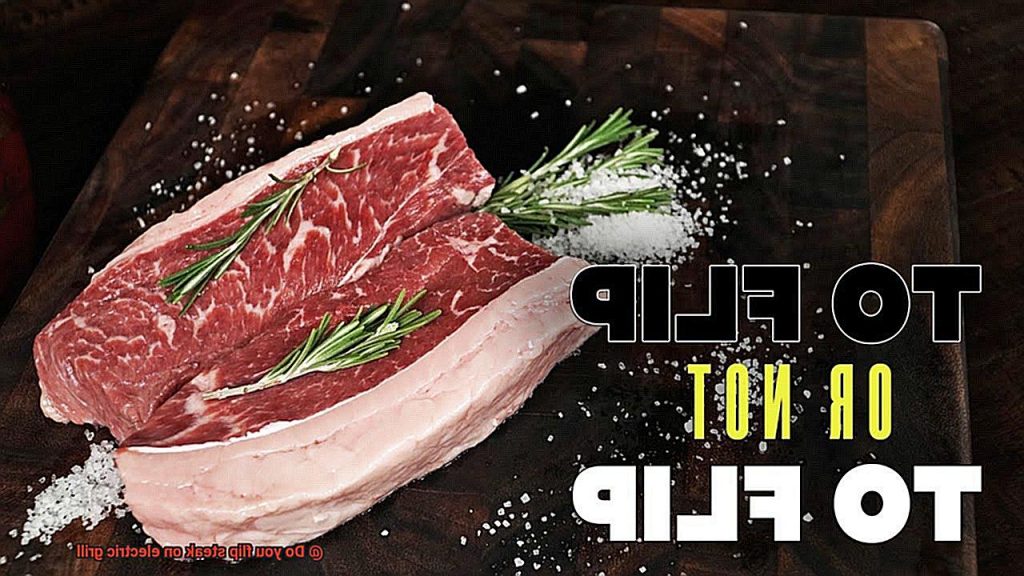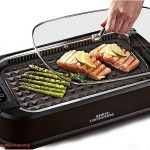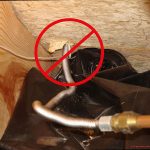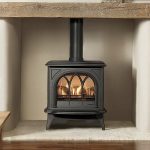Imagine yourself in the kitchen, whipping up a scrumptious meal for your loved ones. You reach for your trusty pot to move onto the next step of the recipe, but you suddenly realize that you’ve recently invested in an induction cooktop. The question pops up: do you need special pots for induction cooking or can you use your old favorites?
If this sounds familiar, don’t fret. Induction cooktops are gaining popularity due to their energy efficiency and accurate temperature control. Unlike traditional gas or electric cooktops, they generate an electromagnetic field that heats the pot directly. However, not all pots are compatible with induction cooktops as they must be made of ferromagnetic materials like cast iron or stainless steel.
In short, yes, you do need special pots for induction cooking. But don’t worry. We’ve got all the details covered in this blog post. We’ll delve into what makes a pot suitable for induction cooking and why it’s beneficial to use them. Plus, we’ll show you how to check if your current pots will work on an induction cooktop.
So sit back, relax, and let’s embark on an exciting journey into the world of induction cooking together.
Contents
What is Induction Cooking?
Induction cooking is a revolutionary technology that has taken the culinary world by storm in recent years. Instead of using a flame or heating element, it uses electromagnetic energy to heat up cookware directly. This highly efficient method can bring a pot of water to boiling point in just a few minutes.
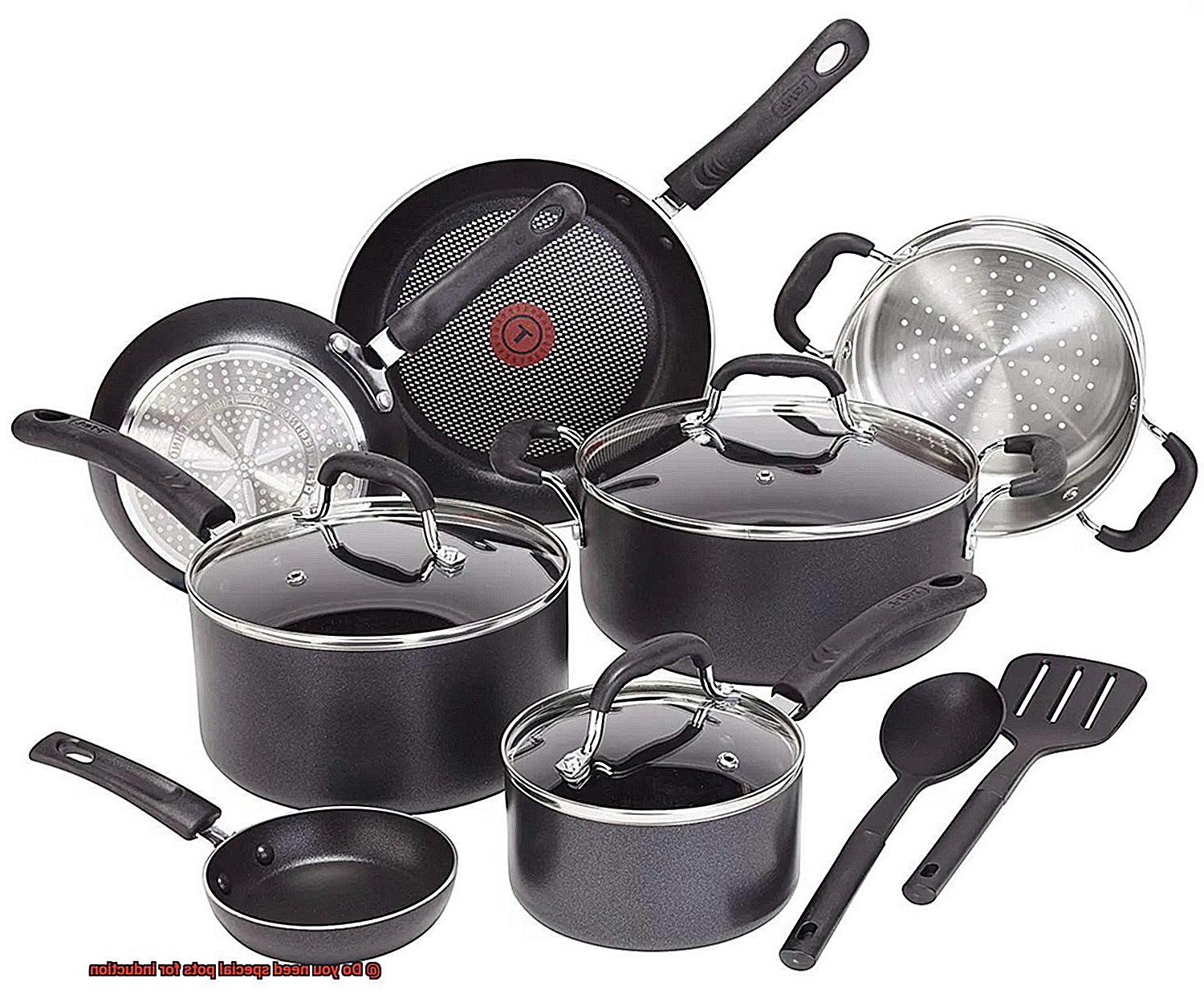
The induction cooktop itself doesn’t generate heat but creates an electromagnetic field that induces an electric current in the pot or pan placed on it. The current heats up the metal of the pot, which in turn heats up the food inside. For this process to work, the cookware must be made of ferromagnetic material, usually stainless steel or cast iron.
One of the most significant benefits of induction cooking is its speed and accuracy. Since the heat is generated directly in the pot or pan, there’s no need to wait for the cooktop to heat up, and you can adjust the temperature instantly. This makes it ideal for cooking delicate dishes that require precise temperature control.
Another benefit of induction cooking is efficiency. Since the heat is generated directly in the cookware, there’s no wasted energy, as there often is with gas and electric stovetops. You’ll save money on energy bills over time and reduce your carbon footprint.
However, one downside of induction cooking is that it requires specific types of cookware. Only pots and pans made from ferromagnetic materials like cast iron or stainless steel will work on an induction cooktop. Cookware made from aluminum, copper, or glass won’t work unless they have a layer of magnetic material added to them.
Do You Need Special Pots for Induction Cooking?
Induction cooking has taken the culinary world by storm, offering a faster, more efficient, and safer way to cook our favorite dishes. However, if you’re new to induction cooking, you may be wondering whether your current pots and pans will work with an induction cooktop. The answer is both yes and no.
Yes, you will need special pots for induction cooking. Induction cooktops use an electromagnetic field to heat up the cookware directly, rather than heating up the burner and then transferring heat to the cookware. This means that your cookware must be made of a magnetic material like stainless steel or cast iron. If your current pots and pans aren’t magnetic, they won’t work on an induction cooktop.
But not all stainless steel or cast iron cookware is created equal. Your cookware must have a flat and smooth bottom to make proper contact with the cooktop surface. Cookware with warped or uneven bottoms may not heat up evenly, which can result in uneven cooking.
So, what should you look for when shopping for induction-compatible cookware? Here are some tips:
- Look for cookware made of magnetic materials like stainless steel or cast iron.
- Make sure the bottom of your cookware is flat and smooth.
- Avoid using copper, glass, ceramic, and aluminum cookware on an induction cooktop as they are not magnetic.
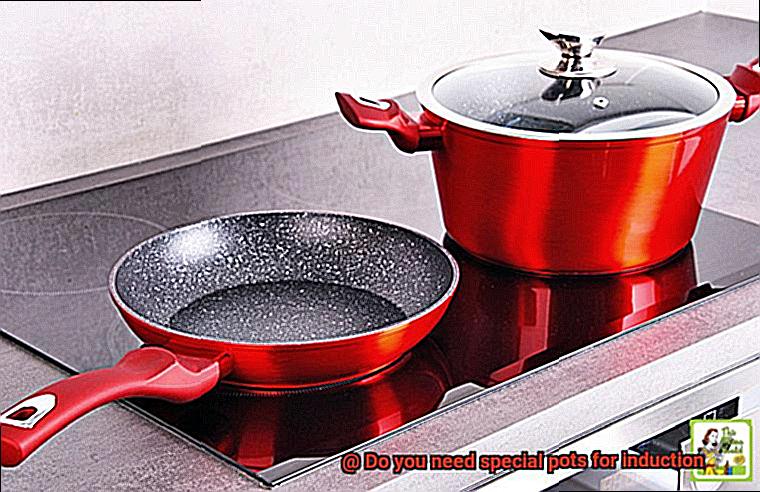
Investing in high-quality induction-compatible pots and pans may seem like an extra expense, but it’s worth it in the long run. Not only will your meals be cooked more evenly and efficiently, but you’ll also enjoy the added safety features of an induction cooktop.
Moreover, the benefits of using induction-compatible pots and pans go beyond just compatibility. They can also help reduce energy consumption by up to 70%, making them an eco-friendly choice. Plus, since induction cooking only heats up the cookware and not the surrounding area, it keeps your kitchen cooler, making it a great option for hot summer days.
What Materials Work with Induction Cooking?
Induction cooking may be the answer to your culinary woes. But before you invest in an induction cooktop, it’s essential to understand which materials work with this cooking method.
Induction cooking requires cookware made of ferromagnetic materials such as iron or steel. Materials like copper, glass, and aluminum won’t work because they are not ferromagnetic. So, what are the best materials for induction cooking? Let’s take a closer look.
Stainless steel is a popular choice for induction cookware due to its durability and compatibility. However, not all stainless steel cookware will work with induction cooking. To ensure high compatibility, it’s essential to look for 18/10 stainless steel, which contains 18% chromium and 10% nickel.
Cast iron and carbon steel are also fantastic options for induction cooking. Cast iron is highly durable and retains heat well, making it perfect for searing meats and frying foods. Carbon steel is similar to cast iron in terms of durability and heat retention but is lighter in weight.
But what about ceramic cookware? Some brands have started producing induction-compatible ceramic cookware that offers a non-stick surface for easy cleaning. However, not all ceramic cookware is suitable for induction cooking, so it’s crucial to check the label before purchasing.
In summary, when shopping for cookware for your induction cooktop, look for materials that are ferromagnetic such as iron, steel, or specific types of stainless steel. Cast iron and carbon steel are also excellent choices while aluminum, copper, and glass won’t work. Some brands offer induction-compatible ceramic cookware, but always check the label before making a purchase.
What to Look For in an Induction-Compatible Pot or Pan
If you’re thinking of switching to an induction cooktop, be sure to consider the type of pots and pans you’ll need. Induction cooking requires specific cookware that is compatible with the technology, so it’s essential to know what to look for when shopping for induction-compatible pots and pans.
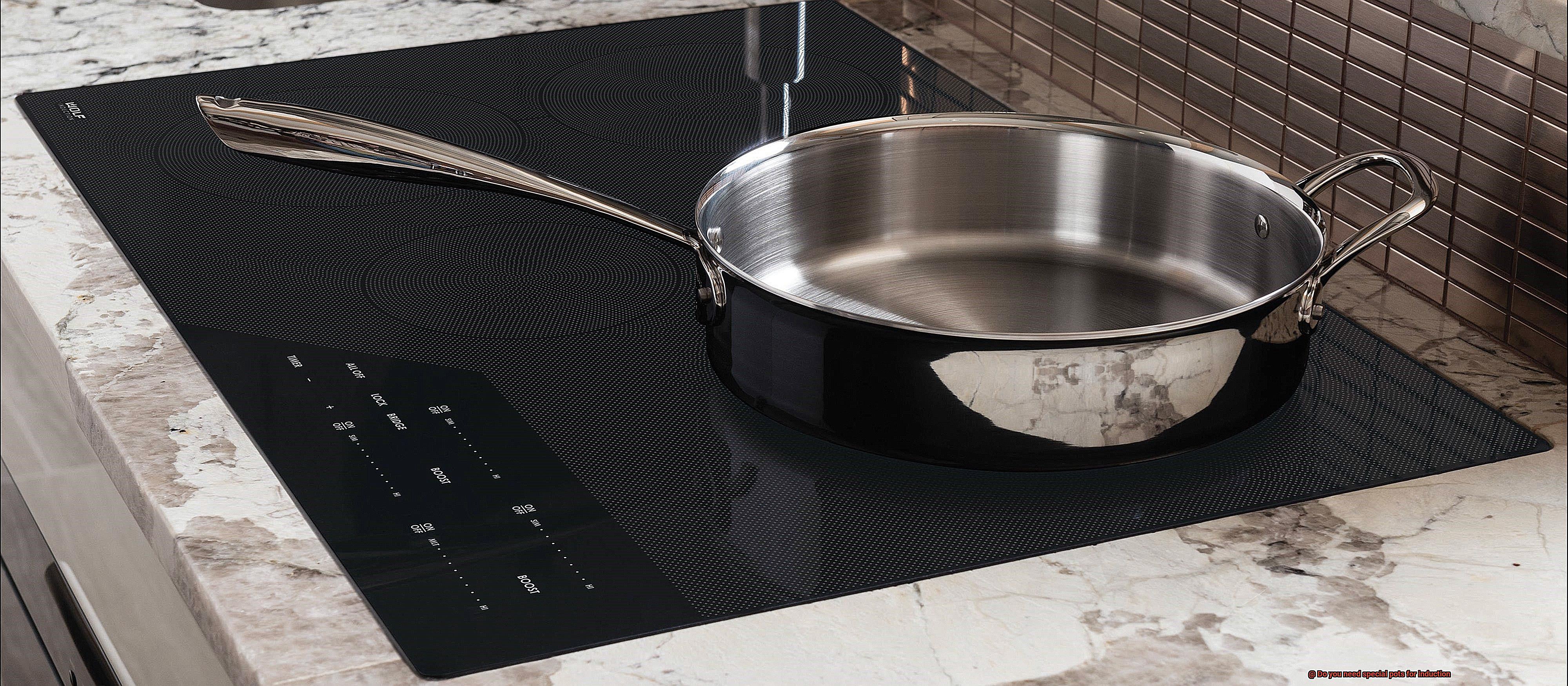
Firstly, check if the cookware has magnetic properties. Induction cooktops use magnetic fields to generate heat, so your pots and pans need to be made of magnetic materials like stainless steel or cast iron. You can easily test this by holding a magnet to the bottom of the cookware
if it sticks, it’s induction-compatible.
Another important factor is the bottom of the pot or pan. It must be flat and have a smooth surface for maximum contact with the cooktop’s surface. Any warping or curvature in the bottom can cause hot spots, resulting in uneven cooking. A flat bottom ensures even heat distribution, which is crucial for achieving perfectly cooked meals.
Material thickness is also a consideration. Thicker pots and pans work better than thinner ones because they retain heat more effectively. Additionally, thicker cookware distributes heat more evenly across the surface of the pot or pan, ensuring that food is cooked uniformly.
Size matters too. Make sure your pots and pans are appropriately sized for your burners. You want to make sure there is enough direct contact between the cookware and the cooktop’s surface for optimal performance.
Finally, invest in high-quality pots and pans that will last you for years to come. Look for brands that offer warranties or guarantees on their products, as this indicates confidence in their craftsmanship. High-quality cookware is not only safer but also more efficient and durable.
Does the Size of the Pot Matter for Induction Cooking?
Induction cooking has taken the culinary world by storm, offering precise temperature control and energy efficiency. But if you’re new to this method of cooking, you may be wondering if the size of the pot really matters. Well, the answer is a resounding yes. Let’s delve deeper into this question and explore why the right pot size is crucial for induction cooking.
Induction stoves work by generating a magnetic field that heats up the pot directly. If the pot is too small for the burner or lacks sufficient magnetic material in its construction, it won’t heat up properly, leading to uneven heating or longer cooking times. To ensure efficient energy transfer and even heating, the general rule of thumb is that the pot should be at least as large as the burner and no more than two inches smaller in diameter.
But that’s not all – the shape of the pot also plays a vital role in induction cooking. Flat-bottomed pots are ideal for induction cooktops since they provide maximum surface area for contact with the burner. In contrast, rounded or curved bottoms can cause uneven heating and may not work as effectively.
The material of the pot is another important factor to consider for induction cooking. Ferrous materials such as cast iron or stainless steel work best on induction cooktops since they respond well to the magnetic field. Pots made of aluminum, copper, or glass won’t work on induction cooktops unless they have a layer of magnetic material bonded to the bottom.
Using the wrong pot size or type can lead to suboptimal results when cooking with an induction cooktop. Your food may not cook evenly, or it may take longer to cook than expected, wasting energy in the process. Therefore, choosing pots that are compatible with your cooktop is essential for achieving delicious and efficient meals every time.
Pros and Cons of Using Special Pots for Induction Cooking
Induction cooking has taken the culinary world by storm, and it’s easy to see why. This innovative technology offers energy efficiency, precision, and safety like no other cooking method. However, there’s one question that newcomers to induction cooking often ask: do you need special pots for it to work? The answer is a resounding yes. Induction cooktops work by creating a magnetic field that heats up the pot directly, which means that only pots made from a magnetic material will work on them.
But what are the pros and cons of using special pots for induction cooking? Let’s delve deeper.
Pros
- Faster cooking times: Induction cooktops heat up the pot directly, meaning they can bring water to a boil faster than traditional gas or electric cooktops. This translates to less time spent waiting for your food to cook and more time enjoying it.
- More precise temperature control: With induction cooking, you can adjust the temperature with precision, making it easier to avoid overcooking or burning your food. This is particularly helpful when preparing delicate dishes that require specific temperatures to cook perfectly.
- Energy efficiency: Induction cooktops use less energy than their gas or electric counterparts because they heat up the pot directly. This translates to lower energy bills and a more eco-friendly kitchen.
- Easy to clean: Since the surface of an induction cooktop doesn’t get hot, spills and splatters won’t burn onto it. This makes it much easier to clean than gas or electric cooktops.
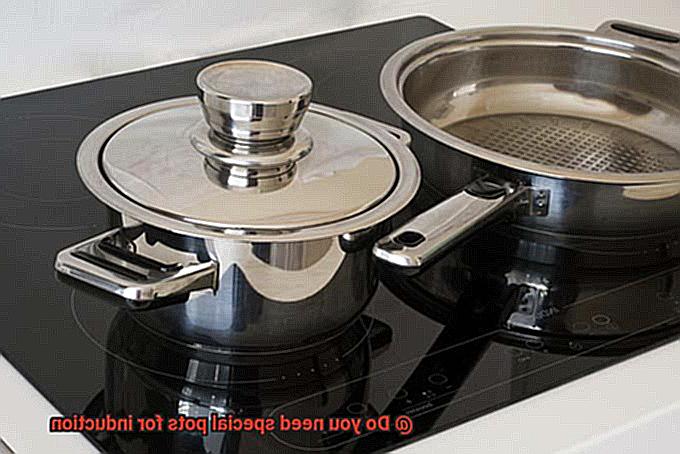
Cons
- Cost: Special pots for induction cooking can be more expensive than regular pots and pans. However, it’s essential to note that these pots will last longer and save you money on energy bills in the long run.
- Limited selection: Not all pots and pans are compatible with induction cooktops, so your selection may be more limited at first. Nevertheless, many popular brands now offer induction-compatible cookware, so this is becoming less of an issue.
- Noise: Some induction cooktops can make a humming noise when in use, which can be annoying for some people. However, this is a minor inconvenience compared to the benefits of induction cooking.
- Requires specific care: Induction cooktops require specific care, such as avoiding dragging pots across the surface, to prevent scratching or damaging the cooktop.
Tips for Getting the Most Out of Your Induction Cookware
If you’re looking to upgrade your cooking game with induction cookware, there are some important tips that can help you get the most out of your pots and pans. Here are five sub-sections to guide you:
Compatibility is Key
The first and most crucial tip is to ensure that the cookware you’re using is compatible with induction cooking. Induction cooktops use magnetic fields to heat up the cookware, so it’s important to choose pots and pans made from a magnetic material such as cast iron or stainless steel. Avoid using aluminum, copper, or glass pots unless they have a magnetic layer added to the bottom.
Choose Flat Bottomed Cookware
To optimize heat transfer and prevent hot spots, it’s best to choose flat-bottomed cookware. This ensures that the entire surface of the pan is in contact with the cooktop. Additionally, using a pot or pan that is too small for the cooktop can lead to inefficient heating and slower cooking times.
Avoid Warped or Dented Cookware
Using cookware with warped or dented bottoms can cause uneven heating and may even scratch the surface of your induction cooktop. It’s also important to avoid dragging your induction cookware across the surface of the cooktop to prevent scratches or damage to the glass.
Invest in High-Quality Induction Cookware
While it may be tempting to use your existing pots and pans, investing in high-quality induction cookware specifically designed for induction cooking can help ensure optimal performance and longevity of both your cookware and cooktop. Look for reputable brands that offer a wide range of options, from frying pans and saucepans to Dutch ovens and woks.
Look for Thick Base and High-Quality Materials
When shopping for induction cookware, look for products that have a thick base and are made from high-quality materials like cast iron, stainless steel, and copper. These materials are durable and heat up quickly, ensuring even cooking and heat distribution. Avoid purchasing cheap aluminum or non-stick cookware, as these materials may not work well with induction cooktops.
apbkoX5Wks8″ >
Conclusion
In summary, induction cooking is a game-changer in the kitchen, providing unparalleled energy efficiency, precise temperature control, and safety. However, it’s important to note that not all pots and pans will work on an induction cooktop. To fully take advantage of this technology, you’ll need special cookware made from ferromagnetic materials like stainless steel or cast iron.
While it may seem like an added expense to purchase induction-compatible cookware, the benefits are well worth it. With faster cooking times and easy cleaning, you’ll save time in the kitchen while reducing your energy consumption by up to 70%. Plus, investing in high-quality induction cookware ensures that you’re getting the most out of your investment.
When shopping for induction cookware, don’t skimp on quality. Look for reputable brands that offer thick-based products made from high-quality materials. Avoid cheap aluminum or non-stick options that may not perform well on an induction cooktop.

